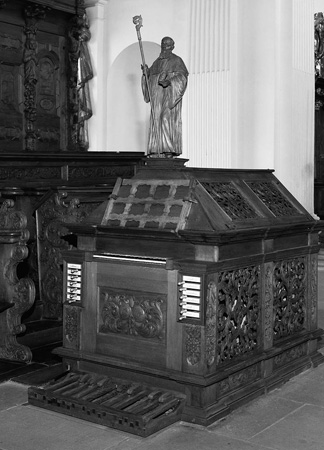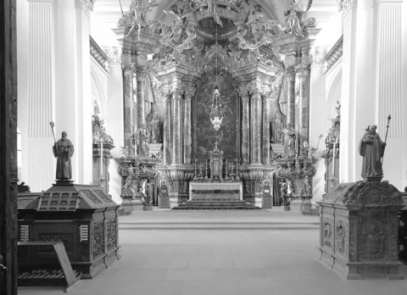

Rheinau (ZH), ehem. Klosterkirche, Choir organ

Built in 1710 by Johann Christoph Albrecht, pedal with two stops added in 1728 by P. Maurus Briol, enlarged to ten manual stops in 1746 by Johann Konrad Speisegger.
State of preservation: Some alterations in 1841; after the dissolution of the abbey in 1862 the instrument was unplayable. Restorations in 1944/45 and 1990/91 by Kuhn to the state of 1746 including reconstructions of stolen pipes and vandalised actions.
Music sample:
Bernardo Pasquini: Aria
played by Albert Bolliger
The organ case of 1710 forms the symmetrical counterpart to the grave of the iroscottish missionary St Fintan, founder of Rheinau abbey, therefore often called a "sarcophagus organ". It is another remarkable example of the specific formative intentions manifest in the baroque choir organs of the Alpine and pre-Alpine regions.In Speisegger's specification the consequent division into single ranks (the usual „Sesquialtera“ only created be pulling both the thirds rank with another rank of fifths) and the appreciation of an undulating stop even with this reduced number of stops are particularly remarkable.
Specification
I+P; manual C-c3, pedal C-a0 (short octaves)
Principal 8’
Coppel 8’
Suavial 8’ (D, from c1;undulating)
Octav 4’
Flauto 4’
Nasat 2 2/3’
Superoctav 2’
Sesquialter 1 3/5’
Larigot 1 1/3’
Mixtur 1’ 3f.
P:
Subbass 16’
Praestant 8’
Coupler
© Greifenberger Institut für Musikinstrumentenkunde | info@greifenberger-institut.de




